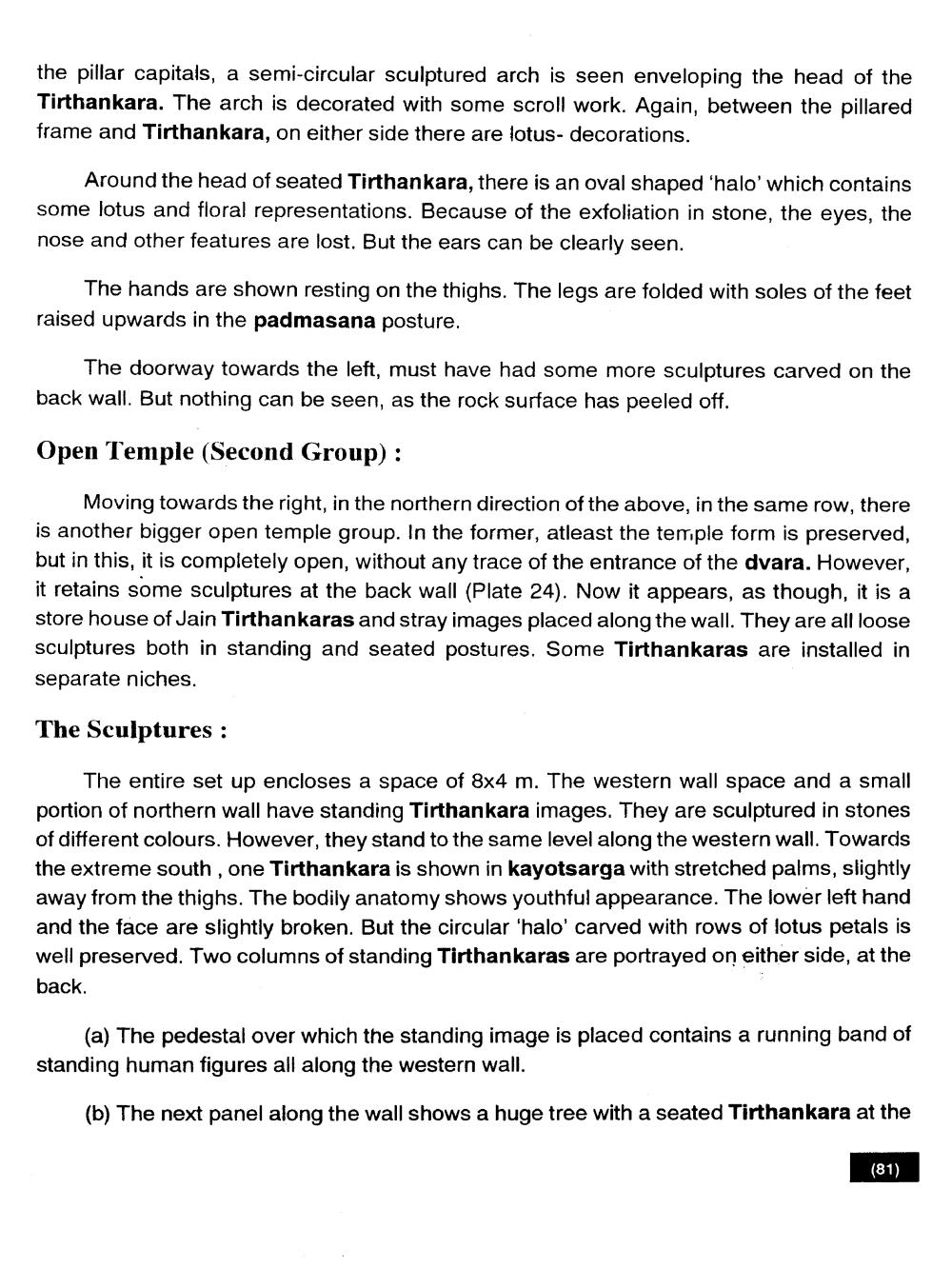________________
the pillar capitals, a semi-circular sculptured arch is seen enveloping the head of the Tirthankara. The arch is decorated with some scroll work. Again, between the pillared frame and Tirthankara, on either side there are lotus- decorations.
Around the head of seated Tirthankara, there is an oval shaped 'halo' which contains some lotus and floral representations. Because of the exfoliation in stone, the eyes, the nose and other features are lost. But the ears can be clearly seen.
The hands are shown resting on the thighs. The legs are folded with soles of the feet raised upwards in the padmasana posture.
The doorway towards the left, must have had some more sculptures carved on the back wall. But nothing can be seen, as the rock surface has peeled off.
Open Temple (Second Group) :
Moving towards the right, in the northern direction of the above, in the same row, there is another bigger open temple group. In the former, atleast the temiple form is preserved, but in this, it is completely open, without any trace of the entrance of the dvara. However, it retains some sculptures at the back wall (Plate 24). Now it appears, as though, it is a store house of Jain Tirthankaras and stray images placed along the wall. They are all loose sculptures both in standing and seated postures. Some Tirthankaras are installed in separate niches.
The Sculptures :
The entire set up encloses a space of 8x4 m. The western wall space and a small portion of northern wall have standing Tirthankara images. They are sculptured in stones of different colours. However, they stand to the same level along the western wall. Towards the extreme south, one Tirthankara is shown in kayotsarga with stretched palms, slightly away from the thighs. The bodily anatomy shows youthful appearance. The lower left hand and the face are slightly broken. But the circular 'halo' carved with rows of lotus petals is well preserved. Two columns of standing Tirthankaras are portrayed on either side, at the back.
(a) The pedestal over which the standing image is placed contains a running band of standing human figures all along the western wall.
(b) The next panel along the wall shows a huge tree with a seated Tirthankara at the
(81)




